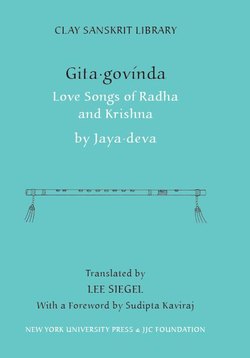Читать книгу Gita Govinda - Jayadeva - Страница 16
На сайте Литреса книга снята с продажи.
Оглавлениеin a way perhaps appropriate to the world of late twelfth-century Bengal, where the poem was written.
The “Gita·govinda” exhibits another remarkable feature in its use of language. The “Gita·govinda” is certainly composed in Sanskrit, but at a time of fundamental transformation of the Indian literary universe—in the early part of the “vernacular millennium.” It is a text of a world in which the linguistic economy is being reconfigured. Sanskrit literature had already given rise to vernacular literary cultures, and was coexisting in lively interchange with them. Jaya·deva composed in an astonishing form of Sanskrit in which the visible marks of its complex grammar are so minimally used that it became intelligible, almost without residue, to a much wider audience of vernacular readers. Literary skill obliterates the formal boundaries between different natural languages. It is an ironically democratized Sanskrit which can be read and enjoyed by those who do not know it. It is a strange bridge language, and it is a text that lies at the crossing and therefore joins the literary world of Sanskrit and of several vernaculars.
In modern times, the “Gita·govinda” has enjoyed a curiously changing reputation. Bengali critics of the nineteenth century derided its utter absorption with eroticism and its inauguration, as they believed, of a deluge of erotic poetry in the late medieval period. In defense, Vaishnava theologians developed an equally one-sided interpretation, asserting that its erotic content is a metaphor for entirely theological ideas. But the text retained its vast popularity among literary audiences, augmented by its use in music associated with Odissi dance.
